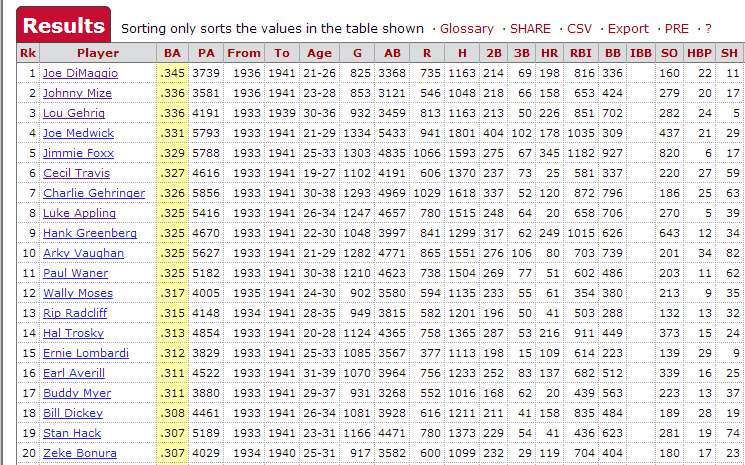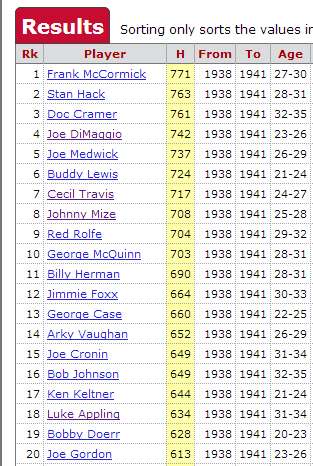Quote:
Originally Posted by howard38

Good stuff, Bill. I think Travis would have finished w/close to 3,000 hits though simply because had his feet not frozen during the Battle of the Bulge he may well have played at a high level until the early 1950s instead of retiring at the age of 33. The other two guys didn't have as much of a track record so I do't think there is any way to know how their careers would have progressed had they not missed so many prime seasons.
Interesting about Alexander too. I had seen pictures of him in military dress but had never considered how his career might have been affected. Two other pitchers I hadn't thought of until you started this thread are Red Ruffing and Ted Lyons. Both were near the end of their careers but also were still pitching at high levels and continued to do so when they returned. Ruffing lost two and a half years and likely missed winning 300 because of it. Lyons lost three full seasons and it is conceivable that he could also have won 300. The year before he entered the service he completed all twenty of his starts and led the league in ERA. When he returned at age 45 he completed all five of his starts w/an ERA of 2.32. An amazing streak of twenty-five straight complete games all after the age of forty.
|
Howard, I absolutely agree with you about Travis. Enthusiastically so.
When I look at a hitter, and assess if they have a shot at 3,000 hits, a couple of the factors I weigh heavily are consistency, health, and most importantly, how early did they start playing? Travis was already a Major Leaguer at age 19. By age 21, he was already getting 170 hits a season. In 1939, he hit .292, and totaled only 139 hits because, per Wikipedia, he had two bouts of the flu. Every other year he was a .300 hitter, and he wasn't just squeaking by, either. From 1934 on, he hit .319, .318, .317, .344, .335, .292, .322 and .359 in 1941. The man was simply a great hitter. When he's compared to his peers, he holds his own with the very best baseball has to offer.
Consider the period from 1934 to 1941. Travis had the sixth highest batting average in all of baseball for that period (minimum 3,000 plate appearances)

Look at the names on that list. When you're on a list ahead of Charlie Gehringer, Luke Appling, Hank Greenberg, Arky Vaughan, Bill Dickey, Earl Averill and Paul Waner, among others, you're running with the high society.
And in the last four years, he was trending upwards. Here's a list of all Major League Hitters for the period of 1938 to 1941, sorted by most hits.

Now, that's including the '39 season where he had two bouts of the flu. Between 1940-1941, nobody in all of baseball had more hits than Cecil Travis' 388.

Travis was a .342 hitter those last two seasons. He was getting a lot of plate appearances, and striking out only 48 times in 1,249 plate appearances was a discipline trend that was going to continue getting Travis more and more playing time.
The surgery done to his feet after he suffered frostbite at the Battle of the Bulge essentially curtailed what was going to be, in my opinion, a Hall of Fame career. Even after he came back, and hit only .241 for his final 800 at bats, he hung up his cleats still having a .314 career average.
I hope that, if anything, we've shown just a few members of Net 54 who Cecil Travis was, and how outstanding a ballplayer he was. He fought for our country, and when he wasn't putting his life on the line for America, he was a hell of a hitter.